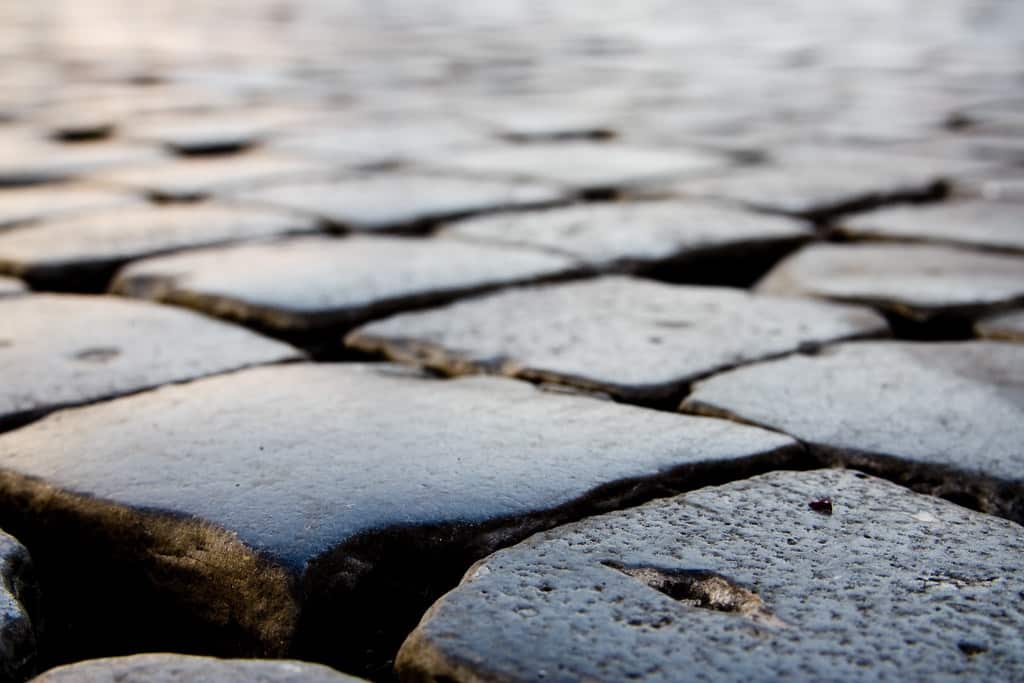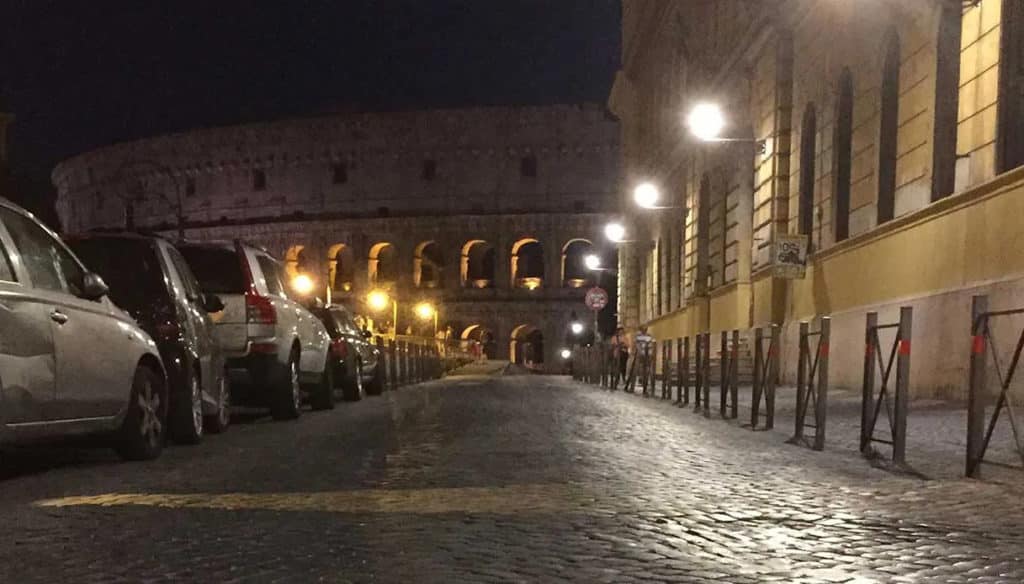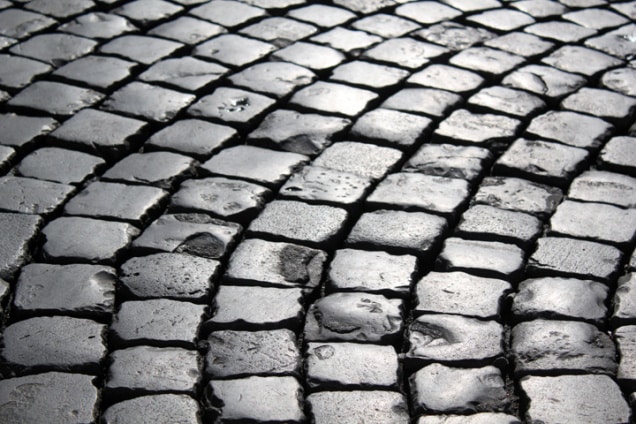Why are the Roman sampietrini so called?
The term “sampietrini” indicates the typical pavement of the historic center of the capital. Do you know why they are called that? The name “sampietrino” or “sanpietrino” (also called “selcio”) derives from the place where this small block of flint, extracted from the quarries located at the foot of the Alban Hills and from the volcanic areas of Viterbo, was used for the first time, precisely in St. Peter’s Square. The sampietrino represents a type of pavé.

Technically it is a block of leucitite (an eruptive rock typical of the volcanic areas of Lazio) used for the construction of the road paving commonly used in the historic center of Rome to pave streets or squares. There are different types and sizes: the largest measure 12 × 12 × 18 cm; the most common ones measure 12 × 12 × 6 cm; while the smaller ones, 6 × 6 cm, are very rare but are found in some of the historical places of Rome, such as in Piazza Navona.

They were conceived in the sixteenth century to facilitate the passage of carriages, and after more than 500 years the cobblestones are now a distinctive feature of Rome. It was used for the first time under the pontificate of Pope Sixtus V and since then it has been widely used to pave all the main streets of Rome since its structure, better than the other existing paving stones, facilitated the passage of chariots.

Monsignor Ludovico Sergardi, prefect and treasurer of the Fabbrica di San Pietro, after evaluating the poor conditions in which St. Peter’s Square was in (shortly before, the carriage carrying the pope had almost overturned) decided to pave the square with the characteristic blocks of leucitite.
The name of the current sampietrino was born in 1725.

The characteristic of this type of flooring is that it is not cemented, but only laid and then beaten on a bed of sand and / or pozzolan: this gives it elasticity and ability to cohesion and adapt to the road surface. It also has the advantage of letting the soil breathe thanks to the spaces between one tile and another; it can also be adapted very easily to the unevenness of the ground and is very resistant.
Its downsides are that it doesn’t guarantee even ground and, when wet, can get quite slippery, making it unsuitable at high speeds. Another negative aspect is the fact that it has an uneven surface, therefore not very comfortable and also noisy during the transit of means of transport.

Not all citizens love them, and there are those who would like to replace them with asphalt, so much so that in 2014 the Capitol had planned to replace the historic pavement of the capital with a less expensive and safer road surface for cars, mopeds and bus. An idea that, however, did not appeal to many citizens (and not only). In the past, someone would also have proposed to sell them to tourists: it seems that the cobblestones are much loved, especially by the Chinese.
The sampietrino is mainly used in central Italy, while in northern Italy there is the porphyry variant called bolognino because it was used in ancient times for paving the streets of Bologna.
How the Roman Built the Roads:
